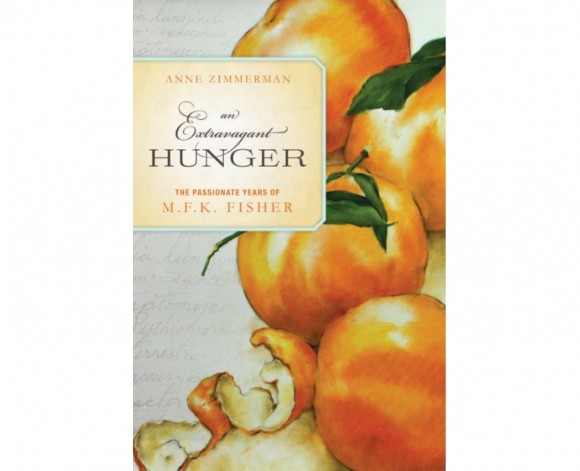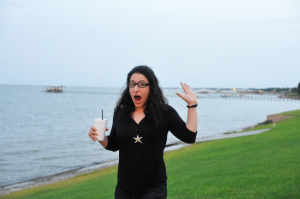by Sam Tackeff | Apr 10, 2013 | Books

I was listening to NPR last week in the car on the way to the gym – that’s when I do the bulk of my NPR listening – and the oddest piece was on ‘This American Life‘ about people who get a tingle feeling in their brain from listening to whispering and other noises. This tingle has a name – it’s called “Autonomous Sensory Meridian Response” or ASMR for short. And apparently some folks with ASMR get so addicted to the tingle that they spend a lot of time actively seeking out videos that activate said tingling. Which, curiously, has led to the proliferation of whispered “haul videos” where bloggers (vloggers?) go over a haul of things which they just purchased, except in a whispered voice.
So after listening to this story, and poking around the internet for more ASMR videos, I realized that I have the tingle. But apparently I just hadn’t noticed it very often – but now that I know what it is, I definitely do, and it’s weird. Whispering will set it off, but so does the whistling of my old metal heaters, and a host of other sounds. I don’t know how I feel about this new realization – I’m just glad I don’t feel obsessed to watch hours of videos every day to activate it.
Where am I going with this? Oh, yes. Haul videos. Okay, so here’s my version of the haul – cookbooks. I’m not going to whisper them to you, but here’s my most recent acquisitions, from a trip to the glorious (and very dangerous) New England Mobile Book Fair. It’s not actually mobile. It’s a bookstore full of new, old, and obscure books housed in a warehouse. They have a massive amount of cookbooks, including a huge selection of remaindered and out of print titles. Usually when I purchase cookbooks these days, it’s older books which are out of print, or UK titles that haven’t come out in the states yet.
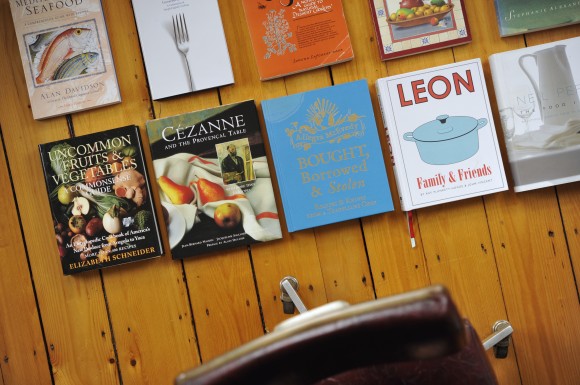
{FYI – this is what your photos turn out like if you try to balance on a rolling office chair to take a shot.}
1. Alan Davidson ‘Mediterranean Seafood’. This came out in the early ’70’s, and is a useful compendium of seafood, part encyclopedia, with a handful of recipes. I’m a sucker for the more ‘educational’ title like this one.
2. ‘Kettle Broth to Gooseberry Fool’ – Jenny Baker. I was unfamiliar with Jenny Baker, but enticed by this little book of simple English cooking.
3. ‘Honey & Spice: A Nutritional Guide to Natural Dessert Cookery’ – Lorena Laforest Bass. This one will sit on my shelf next to my worn ‘Laurel’s Kitchen’, and Tassajara cookbooks. Nothing quite like the late 70’s/early 80’s hippy genre – mostly because I find myself actually inspired to cook from these titles. They were on top of the home made Lara Bar before I was even born.
4. ‘Nothing Fancy’ – Diana Kennedy. Diana Kennedy is one of my heroes, and I hadn’t seen this one before. There’s one review on Amazon for this book – “The recipes are unusual and not what I would cook. It is fancy. This book is mis-titled. The title does not tell how the recipes are.” Clearly the reviewer would not enjoy Diana’s most recent ‘Oaxaca al Gusto’ either.
5. ‘Stephanie’s Seasons’ – Stephanie Alexander. I’ve been on the hunt for an inexpensive copy of Stephanie Alexander’s ‘The Cooks Companion” for quite some time now, but this is a nice consolation prize. Similar to my favorite cookbook of all time (Nigel Slater’s Kitchen Diaries), this cookbook is a snapshot of her year in food.
6. ‘Uncommon Fruits & Vegetables’ – Elizabeth Schneider. Another encyclopedic food book that I’m so fond of. I loved recommending this title at Omnivore, and finally came around to getting myself a copy.
7. ‘Cézanne: A Taste of Provence’ – Naudin, Plazy, Saulnier. One of my favorite cookbooks growing up was Monet’s Table, and since then I’ve actively tried to collect books about artists and food. Artists, who operate with a higher level of criticism of the world, tend to be highly opinionated about cuisine.
8. ‘Bought, Borrowed and Stolen’ – Allegra McEvedy. Allegra was one of the founding members of Leon, a healthy restaurant empire in the UK. This cookbook is about her extensive traveling, collecting knives!, recipes, and stories from around the world.
9. ‘Leon: Family & Friends‘ – Kay Plunkett-Hogge. Leon, the aforementioned restaurant in the UK has their newest cookbook out, and it’s just as stellar as the previous three. (Some of my favorite cookbooks!) I’ve already spent a good deal of time flipping through this and using it as inspiration for dinners. Highly recommended!
10. ‘Foods I Love’ – Neil Perry. I love Neil Perry’s style, and this book is full of simple recipes with detailed explanation of technique and variation.
I read cookbooks like novels, and I’ve already made my way through half of these. All great so far! What are your most recent cookbook acquisitions?
by Sam Tackeff | Mar 18, 2013 | Books, Breakfast, Restaurants
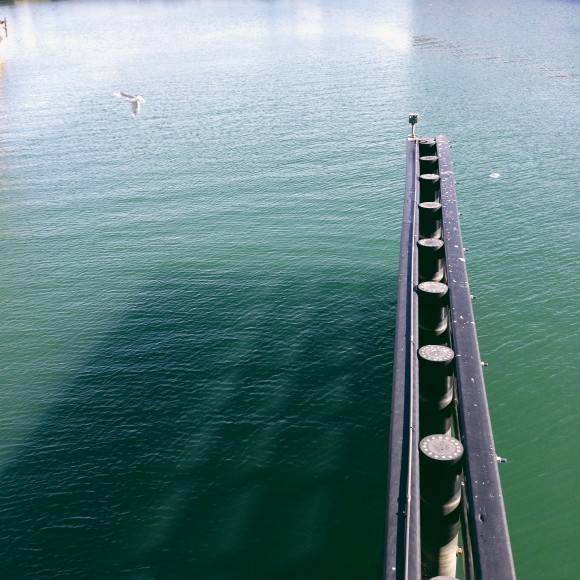
After the recent kerfuffle with horsemeat in IKEA meatballs, I thought I’d make an intro to my most recent read by mentioning that it included a lengthy section on a man supposedly selling dumplings made of human flesh. I’d much prefer the former. (The book was Mary Roach’s ‘Stiff’, a look into the history, culture, and oddity of the human cadaver.)
This book was my workday morning walk companion, an audiobook I downloaded from my library – did you know you can download free audiobooks with your library card? Well you can, and it’s genius. My new commute is a short drive downtown to a parking spot near Devon’s office in Fort Point – our ten minute morning date – followed by a half hour walk to my office in Haymarket.
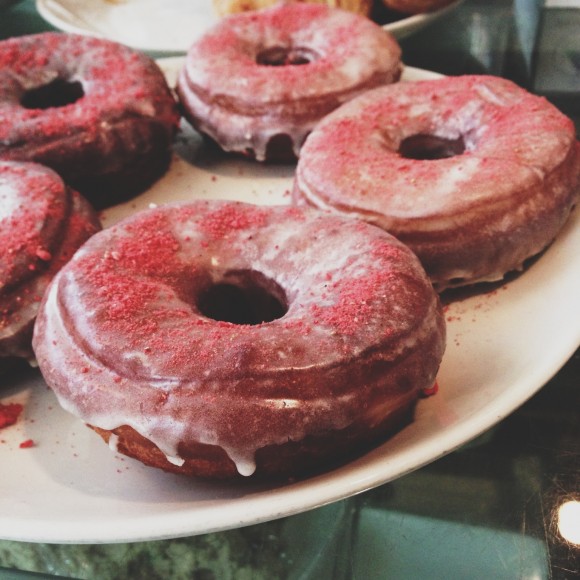
Usually I’ll stop by Sportello to treat myself to a cup of coffee and two hard boiled eggs for my breakfast. Sportello also has delicious quiche for $3, and each morning they have a daily special to tempt me. On Wednesday they have donuts, Friday they have everything bagels – I broke down and ate one last week, the same day weakness caused me to forgo my black and plain morning brew for a cup of their peppermint mocha, which they made fresh with a massive dollop of homemade dark chocolate ganache. Ganache in my coffee. For breakfast. I felt bad for two seconds.
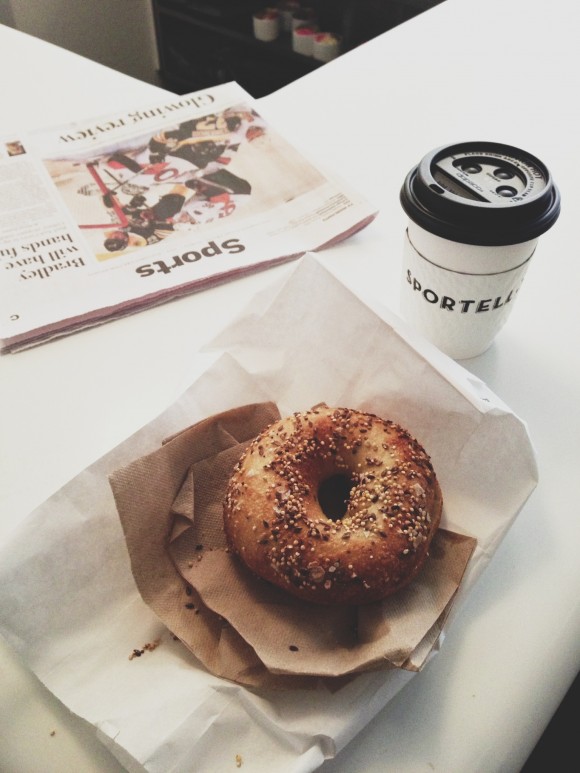
On this walk I walk over a bridge by the Tea Party Museum (historical, not political), where my ears are violated by the blaring fife and drum music over the PA system. I can choose to walk through downtown, or loop the long way on the waterfront, past the hotels, Quincy Market, and the North End. A few times I’ve had a cup of coffee at Flat Black instead – they have good Americanos (ie: flat blacks…). They also have three locations downtown, which makes it confusing if you are meeting a friend for coffee and don’t specify. They have these fun IKEA lamps too, that I’m always intrigued by, but too lazy to purchase and put together myself.
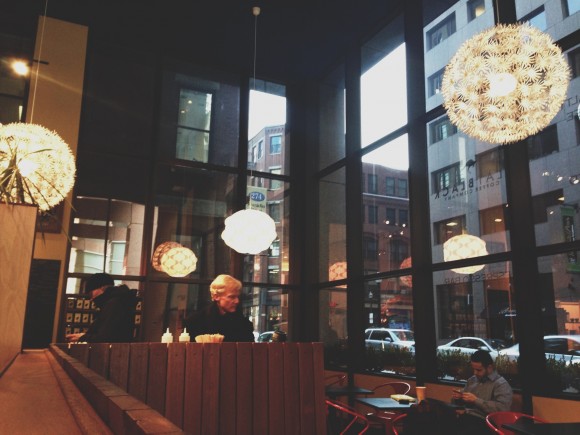
I love these morning walks because I can start the day with a clear head, and feel a sense of accomplishment before I even start my work.
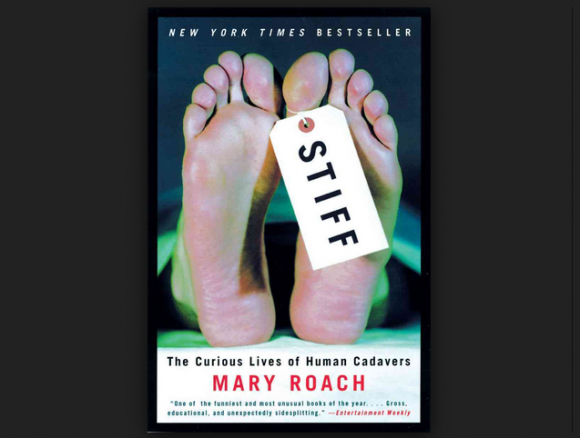
#3. Stiff: The Curious Lives of Human Cadavers by Mary Roach
Paperback, 304 Pages
Published by W. W. Norton & Company (May 2004)
(Listened to the audiobook.)
So about this book. Cadavers. A lot of snark. Accessible science. There’s something to be said about listening to bizarre science facts before heading into work – you always have something odd to entertain (or concern) your coworkers with.
When I was working in Coolidge Corner, I’d routinely walk an hour to work, listening to each of the archived RadioLab podcasts until I had caught up. Stiff felt at times like a RadioLab piece, although admittedly I wasn’t as smitten – after a while I felt like I had exhausted the topic, and yet at the same time not gone deep enough. That said, I’m looking forward to Roach’s newest book: ‘Gulp: Adventures on the Alimentary Canal’.
by Sam Tackeff | Jan 12, 2013 | Books, Books in 2013
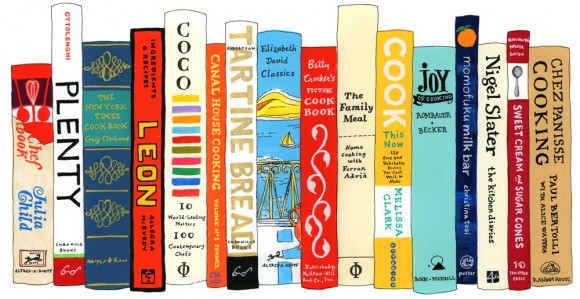
Before I discuss a non-food related novel with you, let me just mention how much I absolutely adore Jane Mount’s Ideal Bookshelf Series. Here’s one of my favorites: Ideal Bookshelf 506: Cooking (the link is to where you can purchase your very own copy on 20×200, not an affiliate link!) I own almost every cookbook on this shelf. When I can afford to commit, I’ll be inquiring about a custom one of her work.
• • •
Reading is one of my favorite competitive sports. Every year I make a resolution to read 52 (or more books). Usually the competition is with myself (although admittedly I’d always try to win the reading competitions at my library): I have a finite amount of time on this earth, and there is a seemingly infinite amount of reading I’d like to tackle. I find that it helps to set goals, rather than throw my hands up in defeat.
Curiously, I don’t “count” my reading of cookbooks, and since I read so many like novels, this would put me well above my yearly quota. For each novel or non-fiction book, I like to write a paragraph or two in summary, sometimes about the book, or sometimes about the things that reading it reminds me to think about. I started this practice because I wanted to find a way to pause, record, and acknowledge the book I read, rather than just consume it. Over time it became a form of gratitude for the author – someone spent months, years, or decades of work on this project, and reading aimlessly and moving on seemed thankless, and too abrupt of an ending.
Usually these notes find themselves in my Goodreads account, or a personal blog, or even just written in a moleskin. But since this blog has become so much more than just food, I figure I’ll stick them here until I get bored, or someone convinces me otherwise.
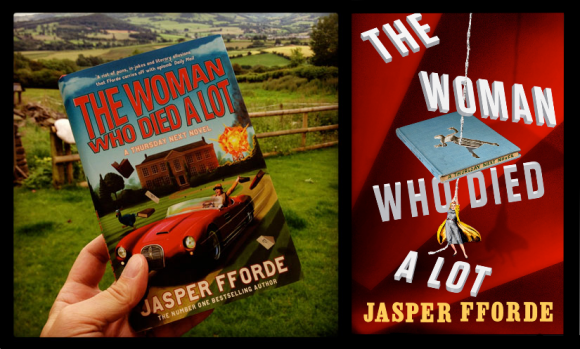
#1.The Woman Who Died a Lot by Jasper Fforde
Hardcover, 384 pages
Published July 12th 2012 by Hodder & Stoughton
(US edition published October 9th 2012 by Viking Adult)
Read on Kindle, review copy provided by NetGalley
This is the seventh book in the Thursday Next series. To my best recollection, I started reading these after finding a copy of the third book ‘The Well of Lost Plots’ in my house, collecting dust. The purchase was an ill-fated attempt by my mother to find something that my brother would enjoy to read. (My brother, who voraciously consumes media in the form of blogs, news articles, and television, is the only member of our nuclear family who doesn’t particularly enjoy the printed word. We’re not sure where he came from.)
Fforde, a master of literary puns, succeeds again in writing something that makes me laugh the entire way through. The main character, Thursday Next, is an aging ex-special ops detective, forced into semi-retirement as the chief librarian of Swindon. Though not my favorite edition of the series, Thursday is a great female lead, and I always enjoy coming back to her adventures. (I should note that newcomers to the series would be much better off starting at the beginning – I accidentally read the third book in the series first, and backtracked, and you’d be missing a lot if you started out here.)
“Do I have to talk to insane people?” “You’re a librarian now. I’m afraid it’s mandatory.”
Please note the UK cover, left, (via Jasperfforde.com) vs. the American version, right – I’ve yet to find a situation where I don’t prefer the British cover art. The UK version includes a fast car driven by the likeable aging protagonist, an explosion, and an escaping dodo – a generally fun cover. The US version, has a design which I admittedly like the look of, but is heavily stylized, and misses the opportunity to represent the strong female lead of a certain age by replacing her with an attractive young woman. Meh.
by Sam Tackeff | Sep 27, 2012 | Baking, Blogging, Books, Holidays
Yesterday was Yom Kippur, the most sacred day of the Jewish year, the day of atonement. It follows at the tail end of Rosh Hashana, the week long celebration of the Jewish new year, and typically is the day that you reflect upon all of your sins and bad deeds. While I’m not particularly religious anymore (despite the fact that my mother has served on the board of our synagogue and is currently on the education committee), I do consider myself quite spiritual, take great comfort in many of the tenets of the faith, and particularly relish the holidays.
Most Jews fast on Yom Kippur, abstaining from food and drink, and aside from a cup of coffee, I did as well. One of the things that I wanted to do on this day was spend some time thinking about what it means to live without. For the past several weeks I’ve been choosing to abstain from foods, certain bad habits, and negative thought patterns. It has been a challenge. One of the great things that has come out of it is a desire to share with you all some of the changes I’ve been making, and I’ve been really moved by all the support that I’ve received. I’m not taking any of this for granted, I feel particularly lucky.
On the topic of living without, I spent a good part of the day reading Shauna James Ahern’s ‘Gluten-Free Girl: How I Found the Food That Loves Me Back & How You Can Too‘. Shauna writes a beautiful blog, about food, family, and her life – choosing to make living without gluten a practice in living fully and well.
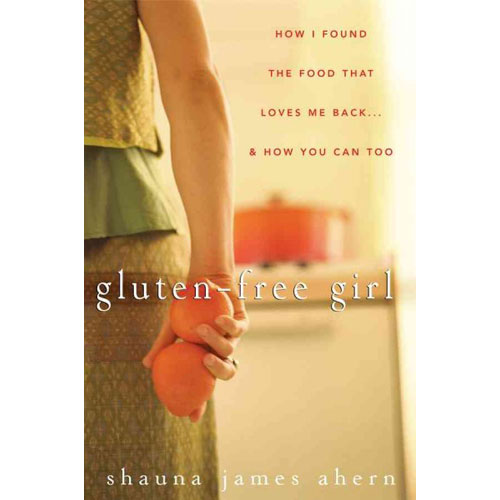
In her pages she is candid about her experiences with Celiac disease, and living gluten free, but it’s about so much more than a life without – it’s about discovery, learning to eat well, learning to love food, learning to live fully. Learning to say yes.
The book skips through her life, from her childhood in California with quirky parents eating TV dinners and Clark Bars, traveling the world, teaching high school English on Vashon Island, a stint in New York in her early 30’s, living in England with an absurdly wealthy family for 6 months, to finding herself back in Seattle where she ends up falling in love with the man she would later marry. (And have an adorable daughter with. But that comes after the book!)
The pages are filled with food memories, friendship, first tastes, and recipes. I spent the afternoon smiling, tearing up, and (very) hungry.
This book came out in 2007, and I’m ashamed to say that I hadn’t read it until now. I don’t know Shauna personally, but she knows several of the friends that I made over the years at Omnivore Books, and my heart lifted to see so many of them mentioned in her wonderful book.
* * *
After regretfully reaching the last page, I put the book down and headed into the fresh air to walk around the neighborhood before heading to our family feast to break the fast. I wandered into this guy.
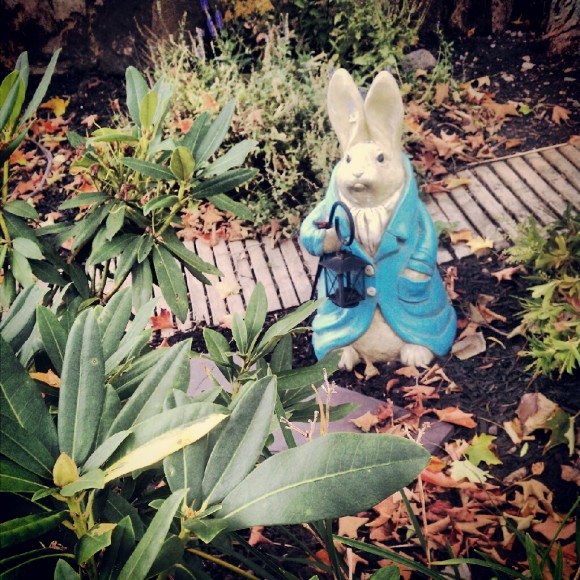
By the time I got back from my walk, Devon had returned home and we drove over to my aunt and uncle’s house together. The sun had sufficiently set, and so I made a beeline to the appetizer table, where I immediately proceeded to gorge myself on carrots, cucumbers, and fresh pistachios that my mom had brought back from her trip to Istanbul. (I abstained from the lovely cheese selection, hummus, and chopped liver, but I thought it was a nice spread.)
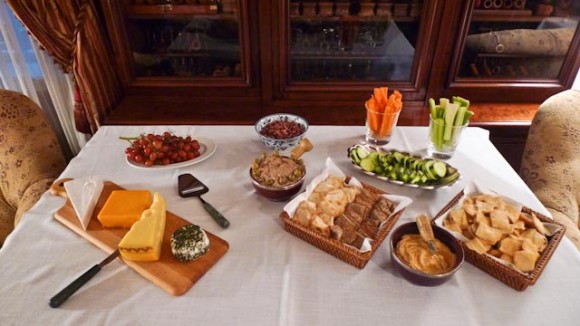
Because my aunt works magic, the table had been set: bagels, lox, multiple types of kugel (noodle pudding), herring with blueberries, cranberry sauce, fruit compote, mini challah, and bread. For our family, Yom Kippur ends up being a cross between traditional Jewish foods and Thanksgiving.
That’s Cooper, 6 months old, eying the gefilte fish.
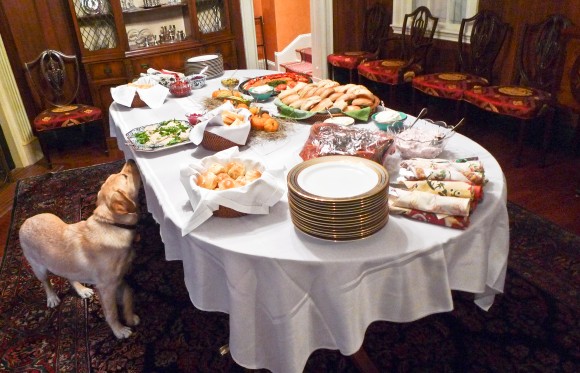
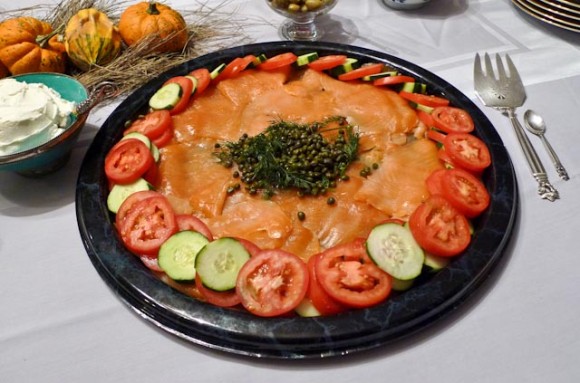
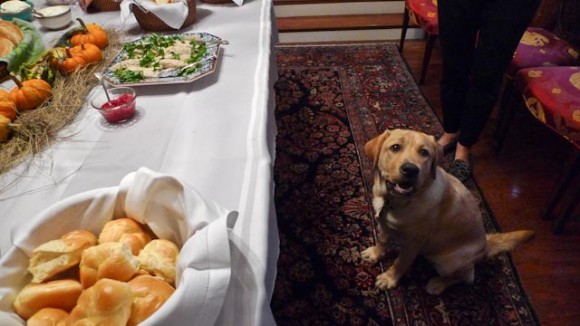
If you insist Coop, you can definitely have my gefilte fish! Mmm.. carp! (I should note here that in addition to some excellent training – he can now heel, lie down, roll over, and shake – he is also learning good manners and isn’t being served people food. I’m totally impressed by my cousin-pup!)
The highlight of the meal was actually this turkey.
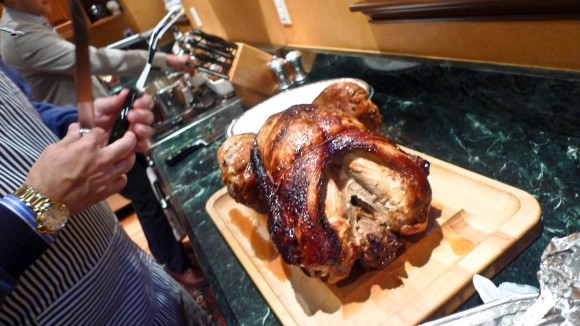
While I knew that I would have to hold back from so many of my favorites (Cheryl Ann’s mini challah rolls!), I didn’t find myself wanting. Here’s my dinner plate – turkey, pistachios, carrots, tomatoes, cucumber, and a whole bunch of pineapple. I sat myself down strategically next to the carved turkey, so when I finished this plate, I ended up having another half pound of bird. It may have been slightly excessive.

For dessert, I had more fruit, and a cup of coffee. Because of this challenge, yet a second holiday in a row where I’ve abstained from dessert. It was… a challenge. The spread included my mom’s apple cake, my favorite pumpkin chocolate chip cake, my aunt’s spectacular banana bread, and Eleanor Bloom’s famous brownies – dense, fudgy, chewy, and perfect from the freezer in the middle of the night.
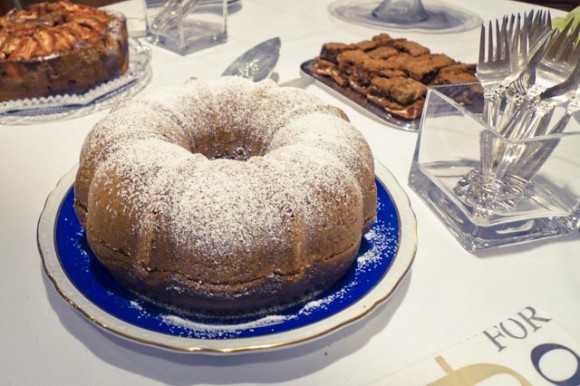
Next time!
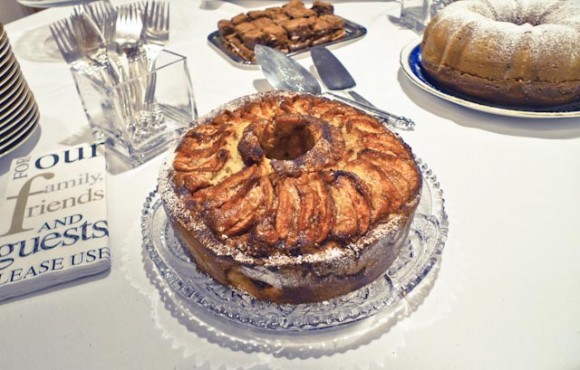
Happy Holidays to my kinfolk!
by Sam Tackeff | Aug 22, 2011 | Books, Writing
“It seems to me that our three basic needs, for food and security and love, are so mixed and mingled and entwined that we cannot straightly think of one without the others. So it happens that when I write of hunger, I am really writing about love and the hunger for it, and warmth and the love of it and the hunger for it… and then the warmth and richness and fine reality of hunger satisfied… and it is all one.”
— M.F.K. Fisher (The Art of Eating)
I have a few rituals for when I get into a rut with food. When I can’t think of what to cook any more, I sit down surrounded by my favorite cookbooks, and make lists. When I can’t think of what to write anymore, I read M.F.K. Fisher. For me, her writing is comforting. Like a stand-by recipe you know will turn out perfectly every time, but each time you cook it, it surprises you with new complexity. A new taste or thought. A new memory. Or a new connection.
Mary Frances Kennedy (M.F.K) Fisher, is generally considered one of the founders of modern food writing. For me, she is the ultimate authority.
Now, lest we ignore our predecessors, there has been food writing for millenia. The Greeks, the Romans, the Egyptians, they certainly knew how to throw a party, and enjoy their food and drink. But somehow, in the past several hundred years, there has been a drought of evocative food writing. The genre suffered a long spell of being largely prescriptive and dry. Either you were writing about how to give dubious elixirs to invalids, or you were giving technical details about mother sauces. Stray from these directions and you would be swiftly smote by the culinary deities. There wasn’t much more than that.
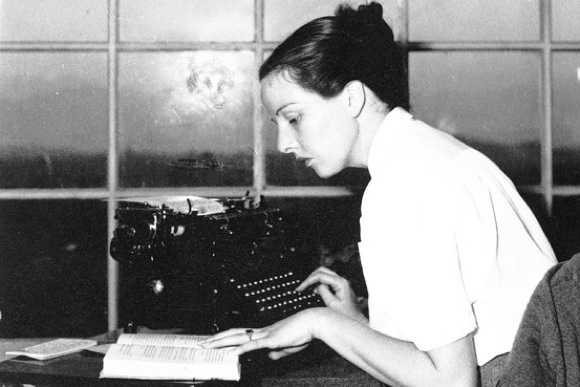
M.F.K Fisher was radically different. She wrote about food from the perspective of someone who passionately loved eating food. She wrote about indulging, traveling for food, taste, dreaming about food. She was blunt, exceedingly witty, and intelligent. How many food writers are expansive enough that their quotes fit seamlessly into Roger Ebert’s film reviews? Reading her writing, I’m always reminded of F.Scott Fitzgerald in tone and style – except instead of writing about disaffected wealthy people, she writes about quelling her own hunger, which is a much more interesting topic. She wasn’t a professional chef (and some of the recipes in her early books were slightly off), but boy could she conjure up a taste memory.
And that’s what modern food writing is about. Good food writing, that is. Fisher’s writing is about thinking about food, not from a technical standpoint, but a heartfelt one. If you are interested in improving your writing, M.F.K. Fisher is a good place to start.
Almost all the food writing I love and devour – the books, blogs, gushing articles in Saveur, even Ruth Reichl’s dream-like food tweets “Silver sky. Breezy. Cooler. Tiny red new potatoes gently roasted. Shower of salt, sweet green garlic. Soft, savory. Irresistible.” which spawned ½ of @RuthBourdain’s satirical tweets: “El Bulli just served its last dinner. Sources tell me Ferran shut off the lights in the middle of dessert and played “Don’t Stop Believin’.” – is indebted to M.F.K. Fisher.
I could spend my time writing about M.F.K. Fisher ad nauseum, but this post is actually about Anne Zimmerman, whose biography of Fisher’s early life came out this year.
I met Anne a few years ago soon after I moved to San Francisco. She was finishing a book about the aforementioned food writer, Fisher, and I was managing a bookstore that specialized in books on food. I’m truly in awe of anyone writing a book, but Anne seemed particularly sweet and humble about it. I knew within about five minutes of meeting her that I would enjoy her writing.
Anne Zimmerman’s “An Extravagant Hunger” relates the story of M.F.K. Fisher’s fascinating rise to fame and prominence. Beyond her writing, Fisher was a riveting persona. By gathering details from her personal correspondence and papers, Anne brings to us the woman behind the writing, and it is easy to see Anne’s admiration of her subject in the text. A dramatic life, rife with tumultuous romance, passion and creativity, the food writing iconoclast is truly a phenomenal character.
There is no doubt that Fisher was a brilliant and talented young woman, however she didn’t hit her stride until her early thirties when her first book was published. From then on, she was incredibly prolific. She penned more than 30 books about food, and countless articles, as well as the best translation of Brillat Savarin’s ‘The Physiology of Taste’.
For all of us writers who have yet to publish our first book, it is encouraging to read about the meandering path it takes to be a true renaissance woman.
An Extravagant Hunger: The Passionate Years of M.F.K. Fisher by Anne Zimmerman
Published by Counterpoint, 2011
352 Pages
And if you need to get started on Fisher – I’d go ahead and recommend ‘The Art of Eating‘ which is a compilation of some of her best work.




















